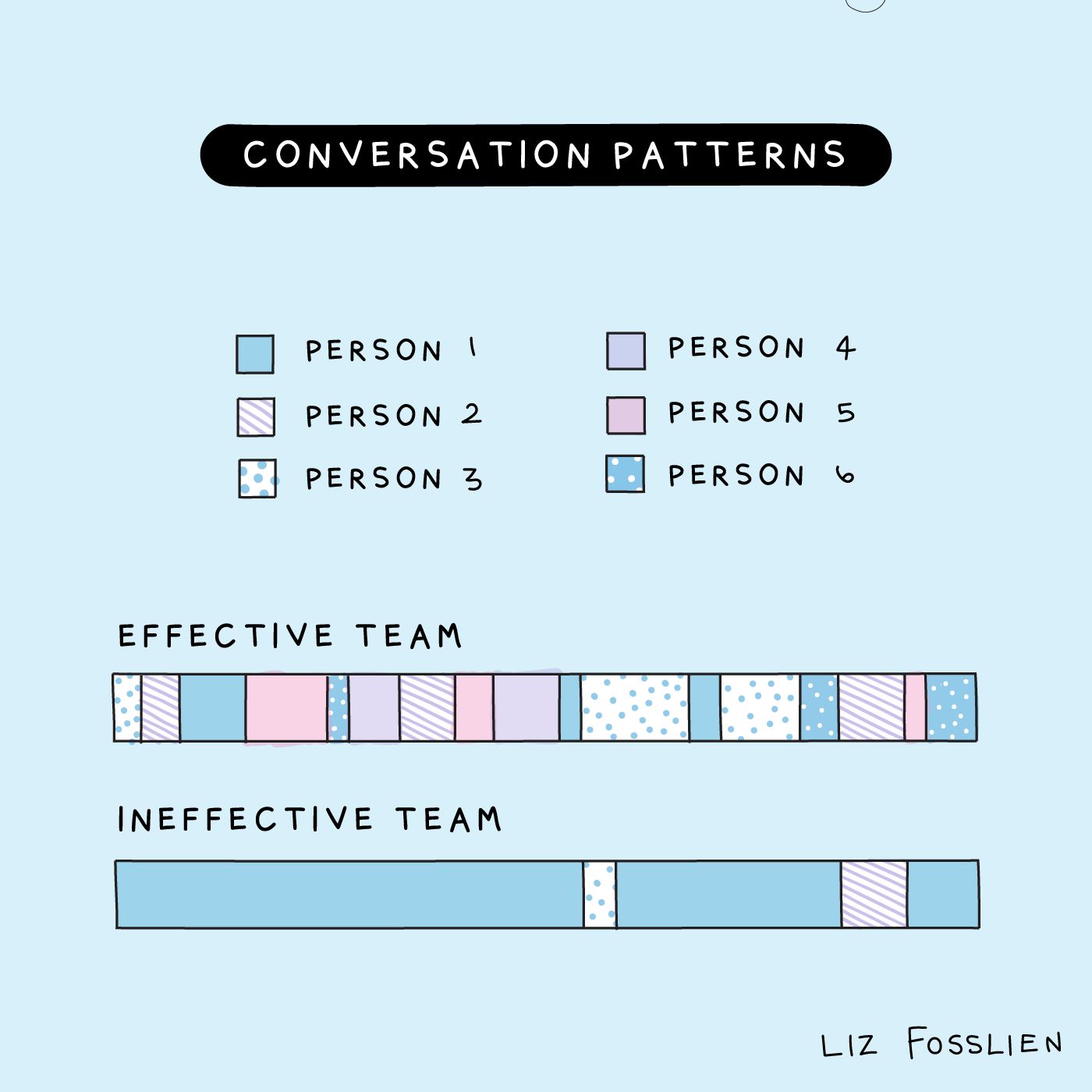Running inclusive meetings
December 15, 2022
Inclusive meetings can help surface multiple perspectives and ideas, which can lead to better decision making and problem solving.
Have you ever been in a meeting that’s dominated by the same 1-2 voices contributing? Or been one of those 2? :) It’s one thing to “want” to improve this, but there’s a lot of nuance to factor in: different expectations, preferences, and backgrounds. It really all starts with psychological safety.
 Credit: Liz Fosslien
Credit: Liz Fosslien
To run inclusive meetings that prioritize psychological safety, it’s important to start by setting the tone and reminding participants that different perspectives can lead to great outcomes. I like to set the tone so folks feel team meetings are “low stakes” safe spaces. It’s okay to share updates but to also friendly debate. It’s important to be open to debate and to remember to debate the issue, not the person.
Make it okay (and safe) to fail. Meetings can be more than a celebration of what’s going well but can also be a forum for talking through challenges. Failure should also be embraced as an opportunity for learning (e.g. I tried solving a problem using X last week, it didn’t work, but we learned Y that informs next steps).
To create a truly inclusive space, consider rotating roles in meetings (who is presenting, driving it, taking notes) and sharing the agenda ahead of time. It’s also important to be mindful of people who may be remote or in different time zones (both can be common these days).
Make sure to allow enough time for everyone to process and contribute. Folks that are introverts might be more happy to contribute async (e.g. via comments on a doc, team chat) than live, while extroverts might love the chance to jump in in real-time. Both are okay to support and I’ve found it helps to normalize folks not having a perspective to share right now too. It might come later.
Outlining how feedback was incorporated after reaching a decision in meetings is also an important step for boosting team members’ connection to the work and encouraging future participation in meetings. This step is often overlooked, but providing transparency about how feedback was incorporated can help to build trust and foster a sense of inclusion within the team.
Some of these ideas have helped in running inclusive meetings at Google and I hope they might resonate with others too.
In summary:
- Make it comfortable to contribute and take risks
- Include everyone
- Rotate roles
- Ensure every voice is heard
- Be transparent about how decisions are made
A write-up on this topic is also available on Google’s WeWork site.